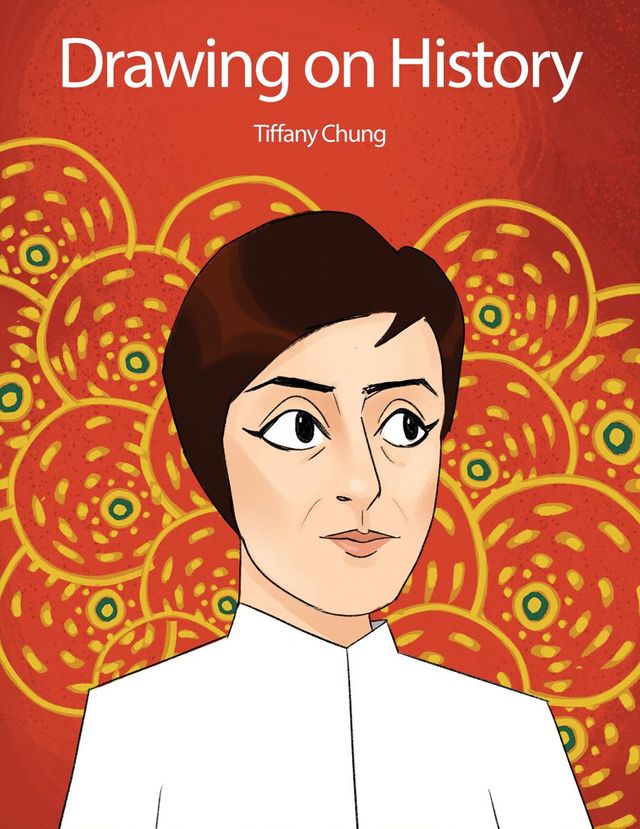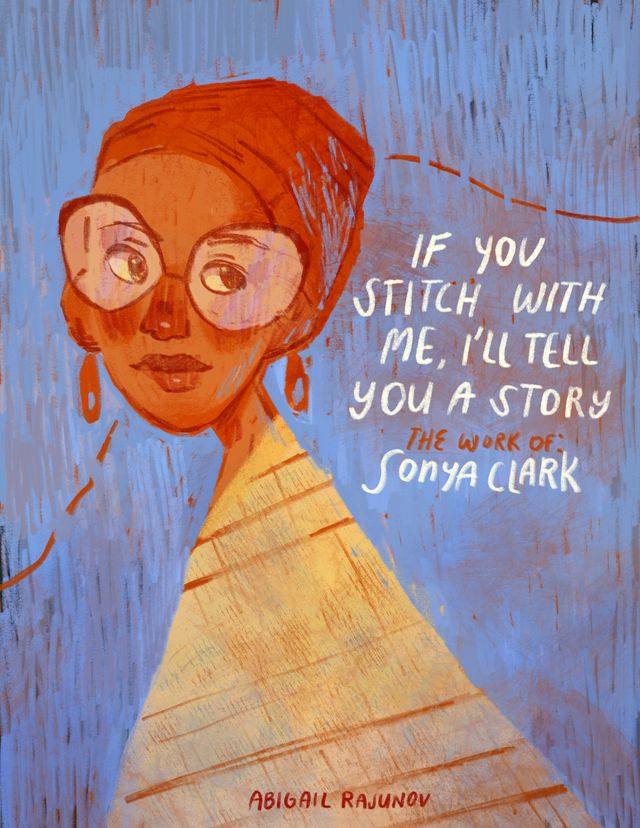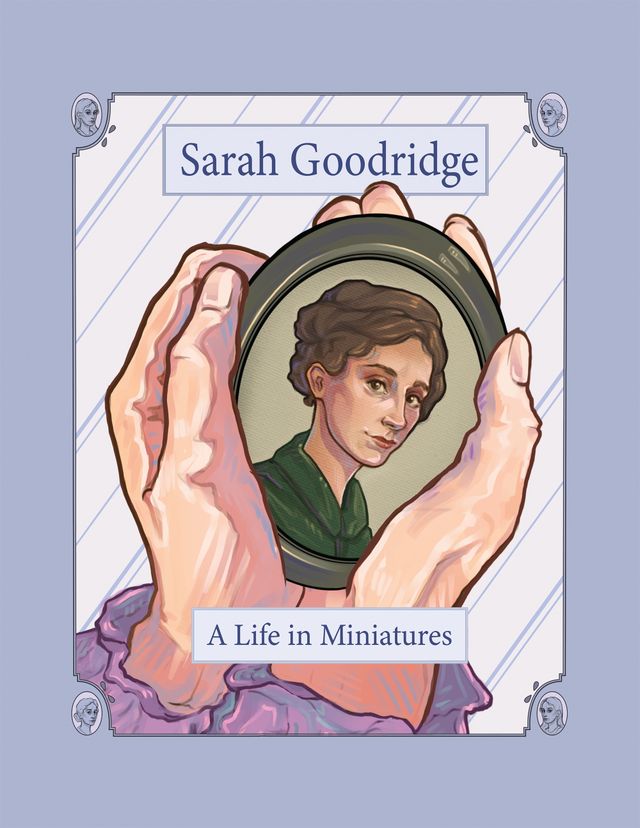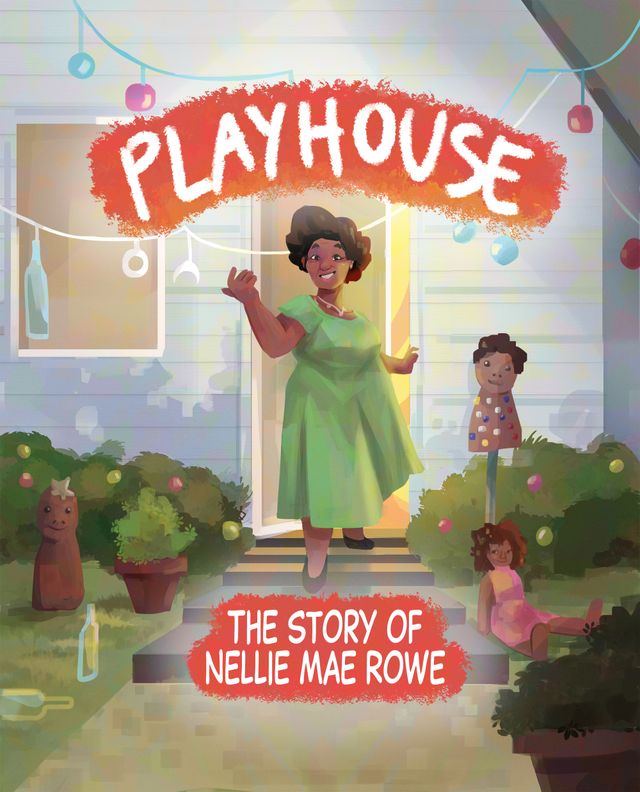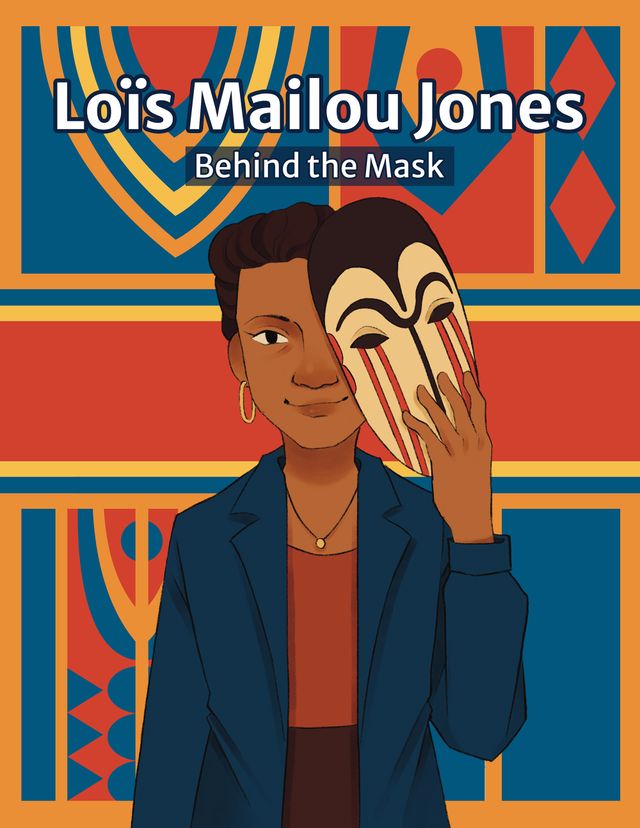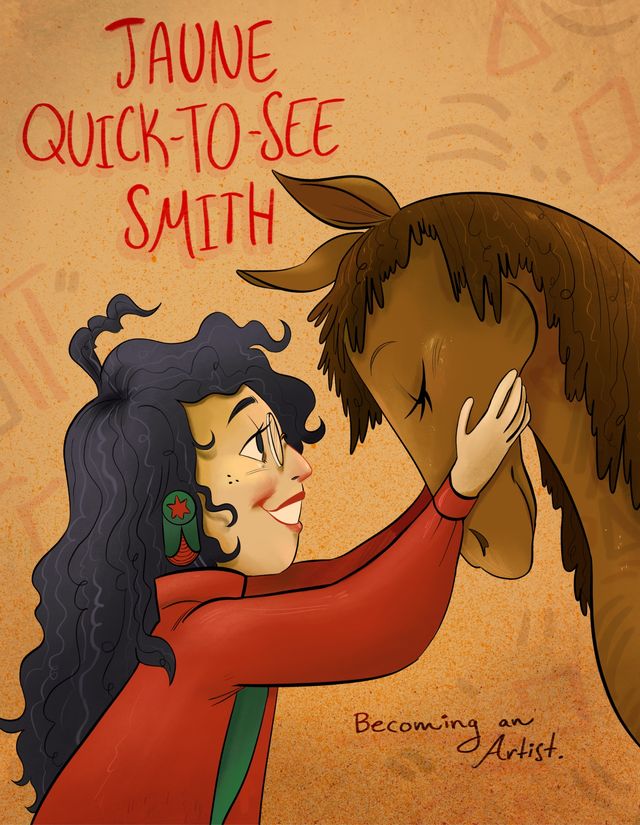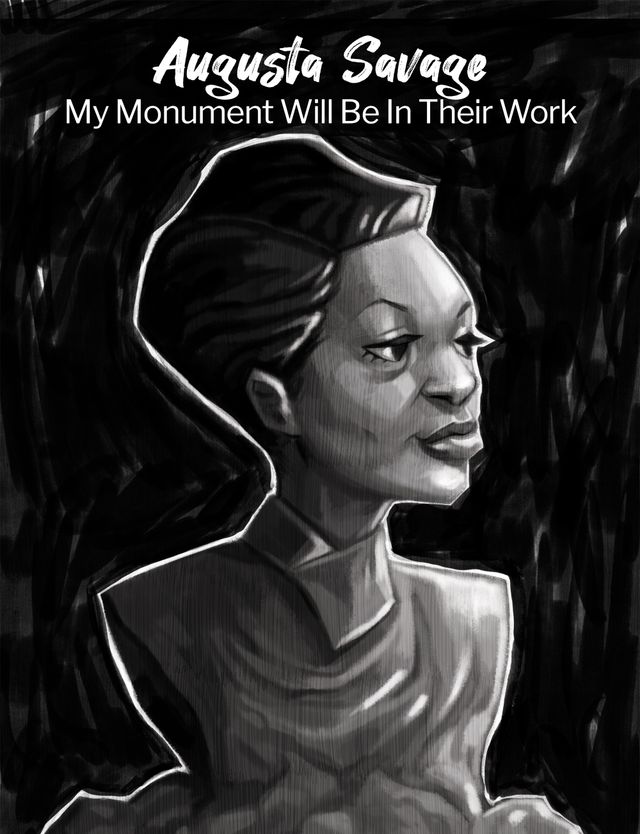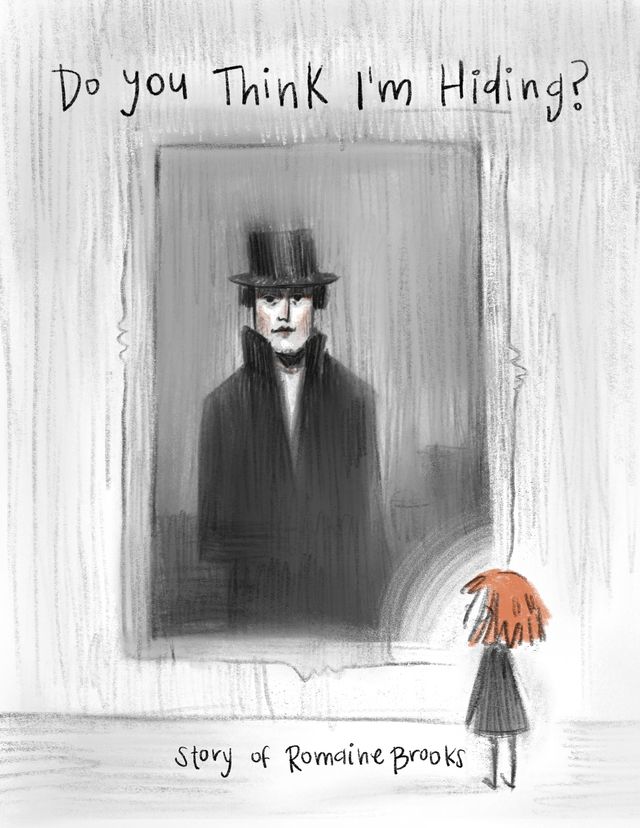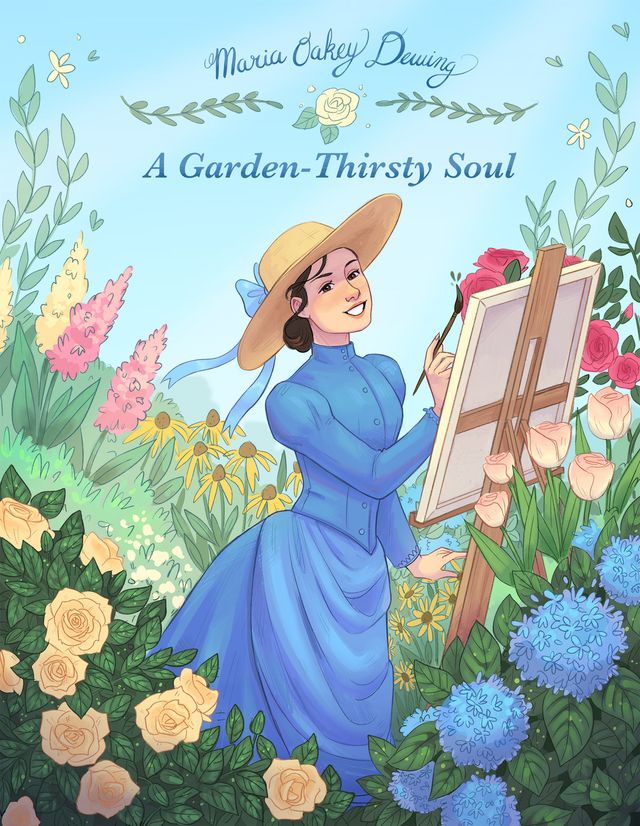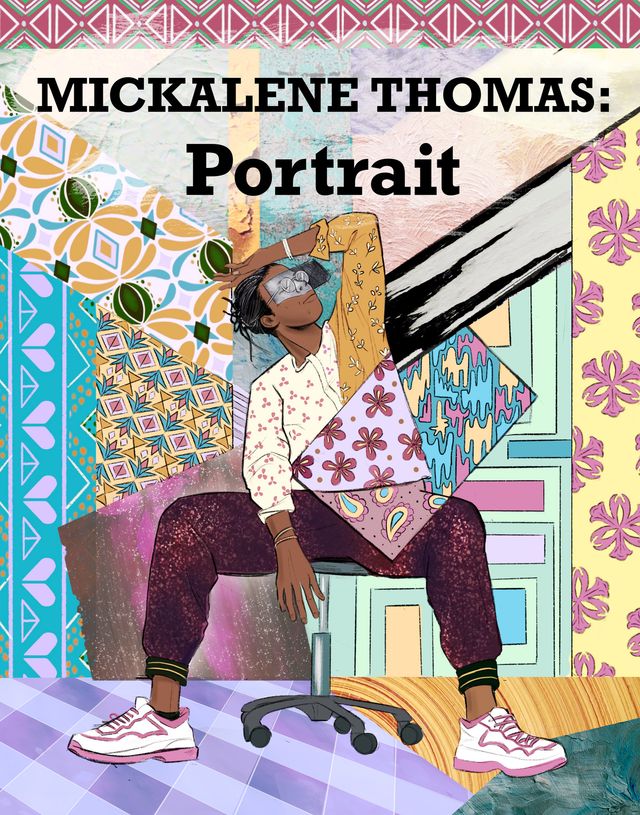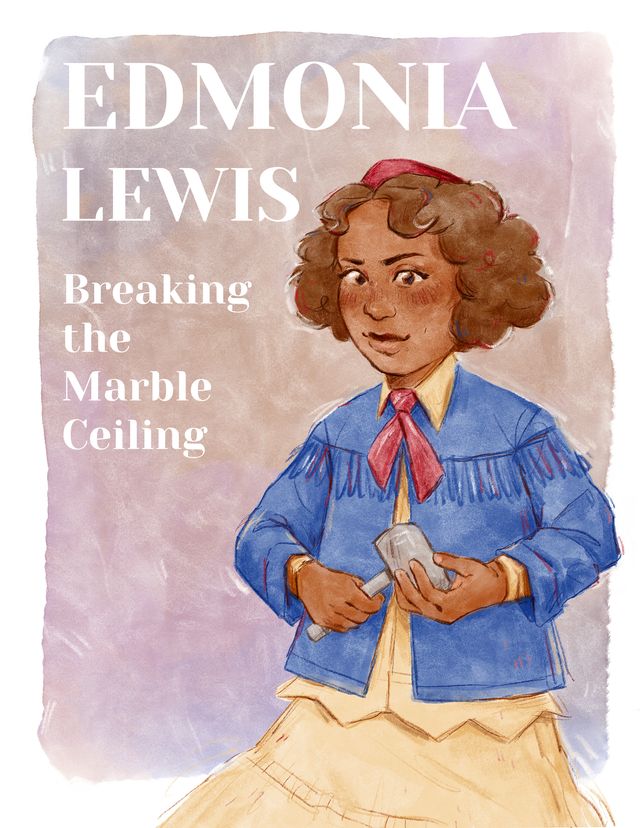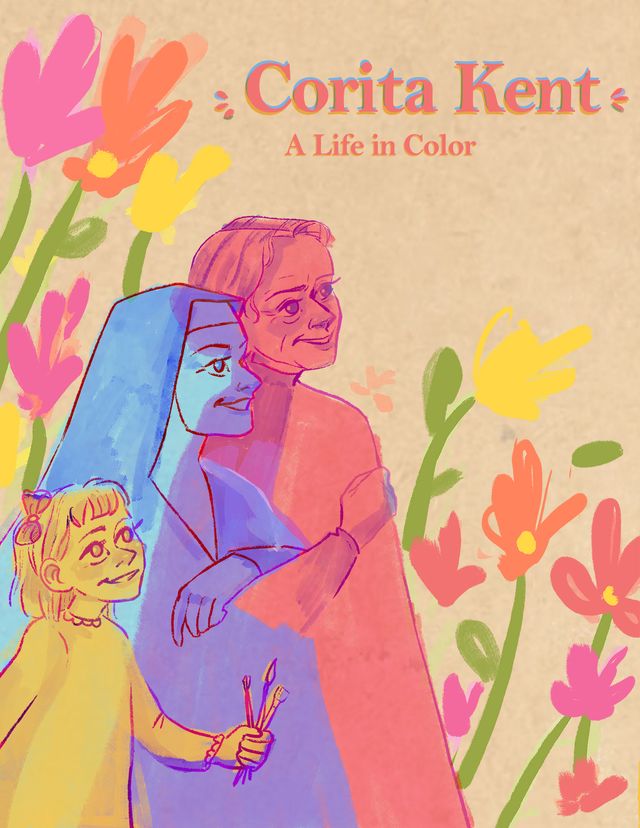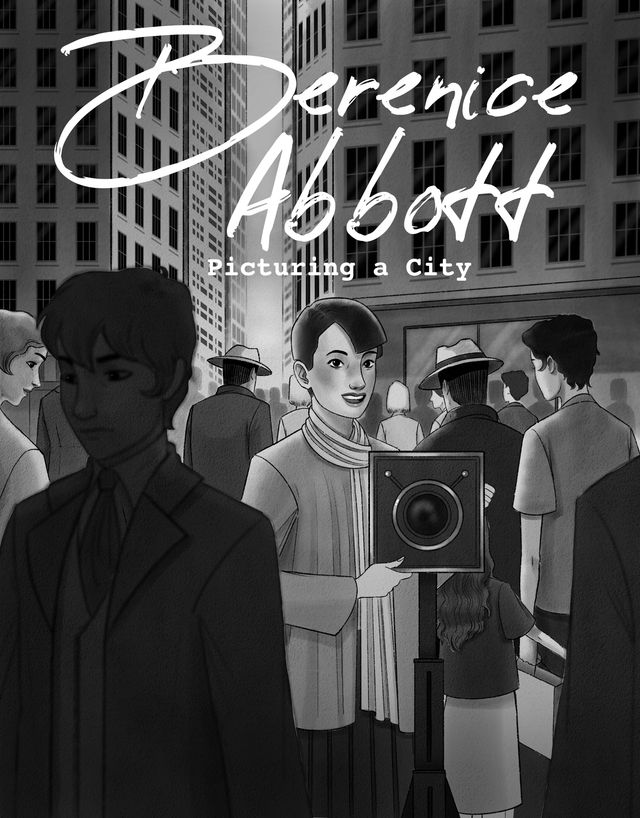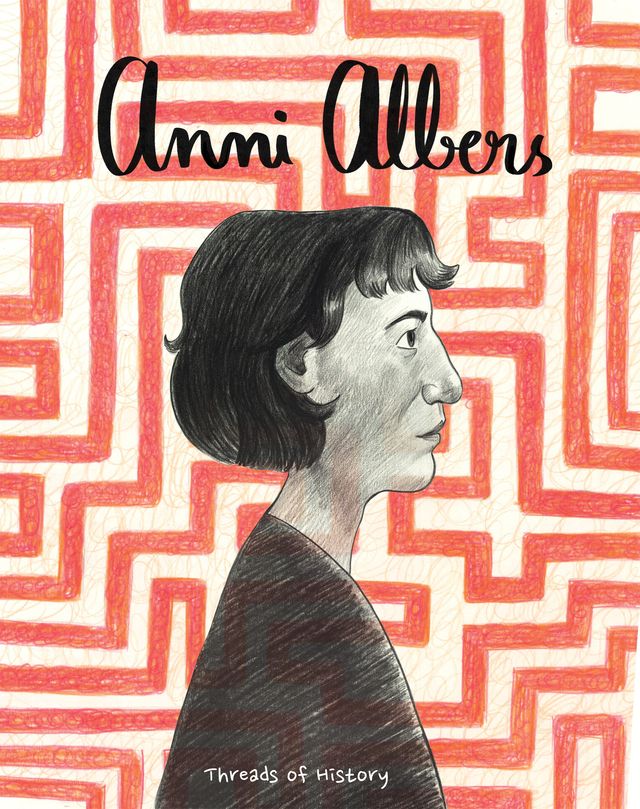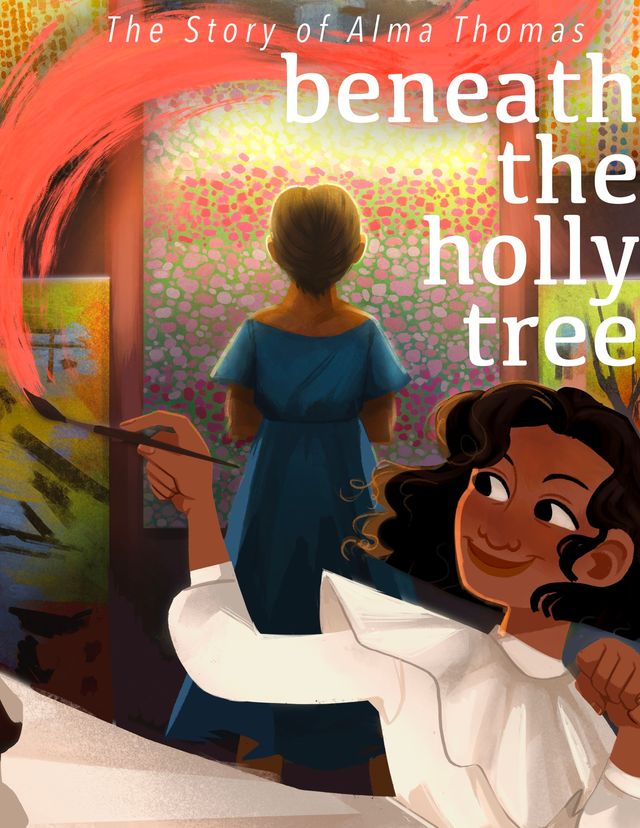This comic is part of a series Drawn to Art: Ten Tales of Inspiring Women Artists that illuminates the stories of ten women artists in the collection of the Smithsonian American Art Museum. Inspired by graphic novels, these short takes on artists’ lives were each drawn by a woman student-illustrator from the Ringling College of Art and Design.
Kay Sekimachi and her family were forced into a Japanese incarceration camp during WWII. There, she spent her time making art. After the war, she discovered weaving and her mastery of techniques earned her the sobriquet “the Weaver’s Weaver.”
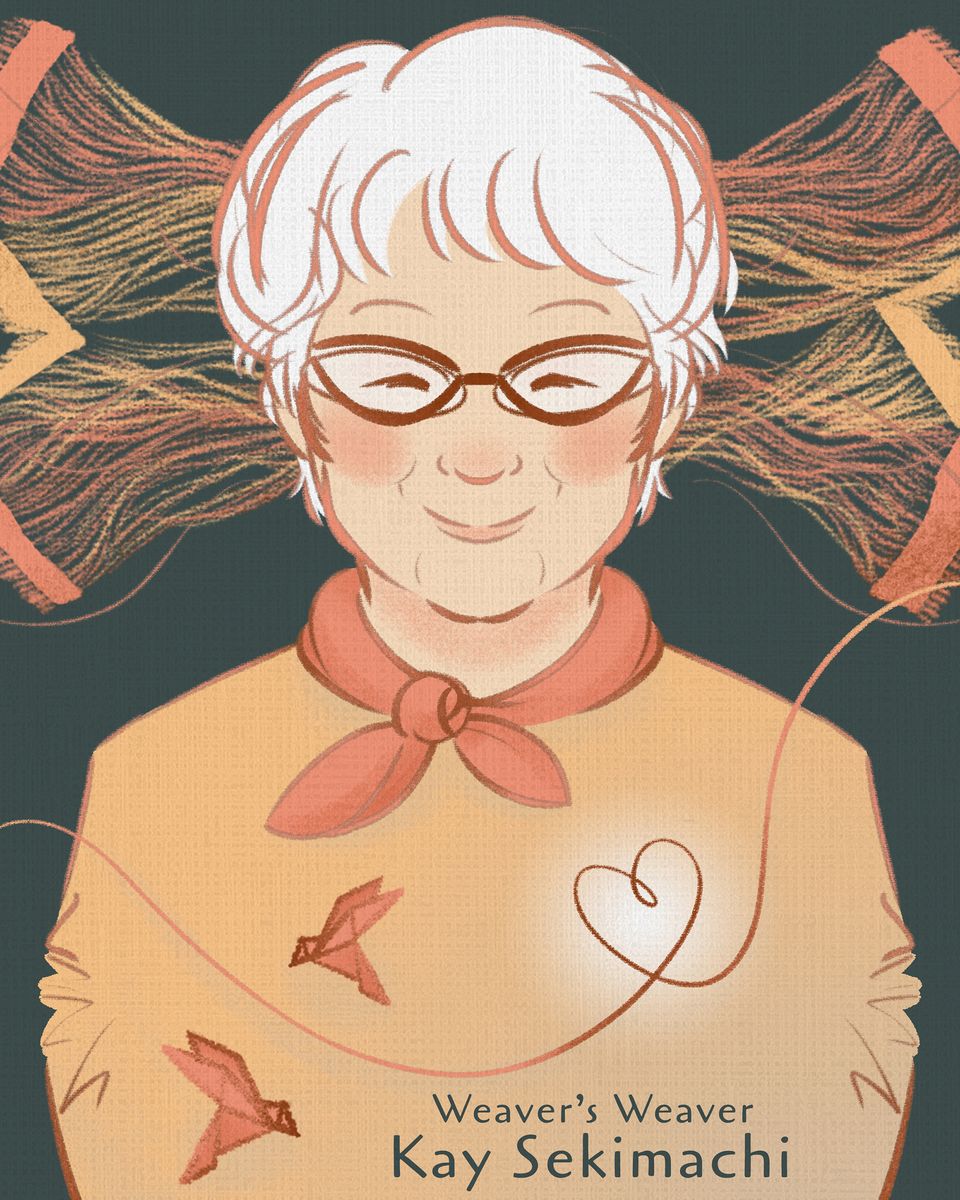
Comic book cover shows a colorful illustration of an old woman from the torso up. The elderly woman’s hair is short and white in a pixie cut and she is wearing glasses and a red scarf around her neck. She is wearing an orange sweater and a smile on her face. Her cheeks are rosy. On each side of her head are three woven rectangles in progress, alternating in orange and a sunshine yellow with threads of fabric crisscrossing each other. Across her chest, there is a singular strand of fabric that loops into a heart over the place where her human heart is. It glows in bright white on the otherwise orange sweater. On the left side of this strand, there are two red paper origami cranes, one below the strand and one above the strand. At the bottom of the page is the title. Text reads, “Weaver’s Weaver: Kay Sekimachi.”
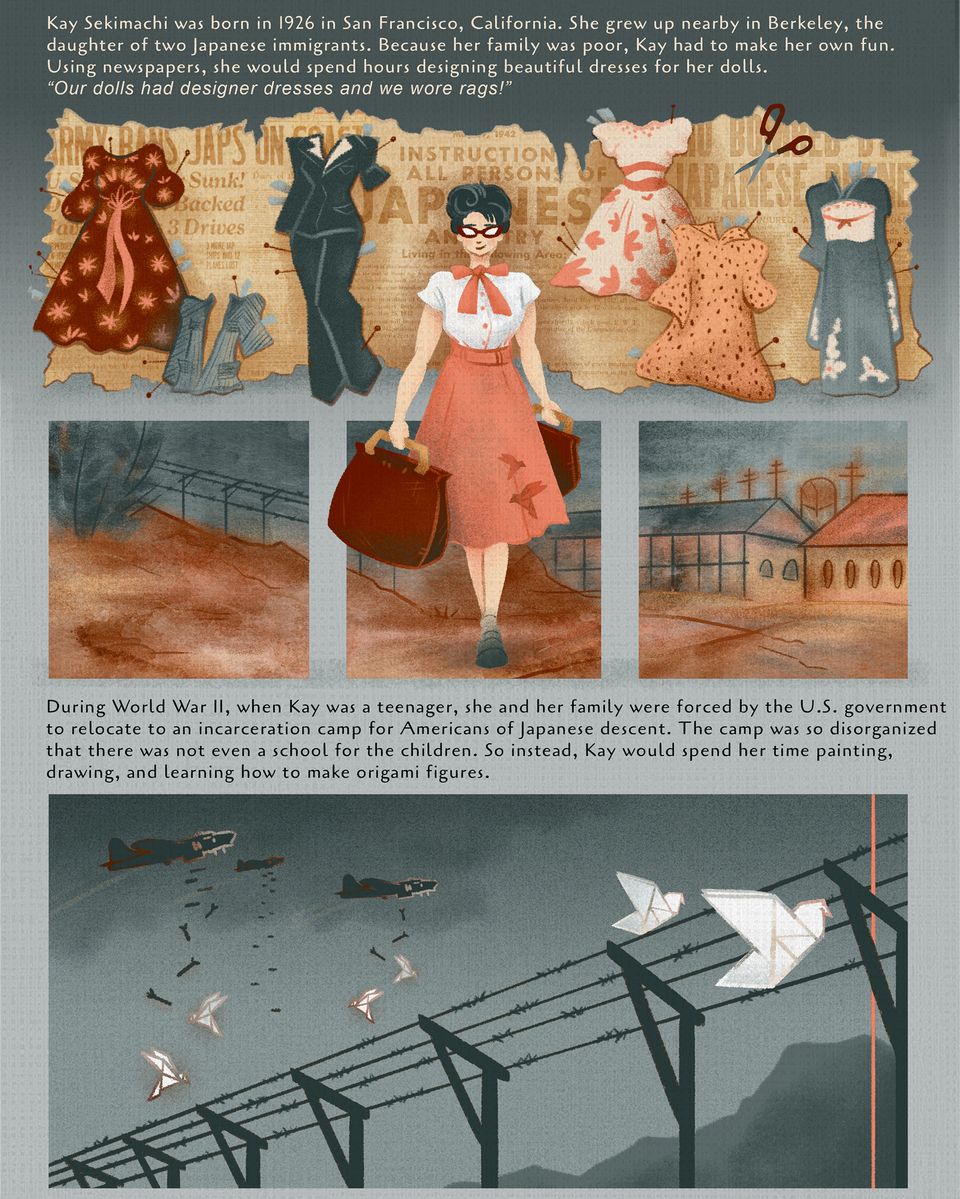
Text reads, “Kay Sekimachi was born in 1926 in San Francisco, California. She grew up nearby in Berkeley, the daughter of two Japanese immigrants. Because her family was poor, Kay had to make her own fun. Using newspapers, she would spend hours designing beautiful dresses for her dolls. Kay’s quote says: “Our dolls had designer dresses and we wore rags!” Panel one: A young woman walking with one red suitcase in each hand is in the center of the page. She has short, dark hair and is wearing a white button down, cap sleeve shirt with orange buttons. She has an orange scarf tied in a bow around her neck and matching belt and full skirt that falls just below her knees the same shade from the cover page. The skirt has two dark orange paper origami cranes on it. Her shoes fade from gray into black. The panel is divided into two images: one is a horizontal collection of six paper doll clothes Kay created: a red and pink dress, pants, a black pantsuit, a white and pink dress, an orange dress with brown polka dots, and a blue Japanese kimono with white flowers at the hem. All of the clothes have scotch tape and needles sticking out at the shoulders, hips, or hems. A pair of scissors is at the top right-hand corner. The clothes are on top of newspaper headlines including the words “Japs” and “Japanese.” The bottom horizontal image is broken up into three panels, depicting the barren land of an incarceration camp, fencing, and housing structures with telephone wires and a water tower in the background. Muted earth tones of brown, gray and rust red are used in these panels. Panel five: At the bottom of the page, one wide panel stretches across and shows two black airplanes dropping bombs from the air in gray skies. The mountains in the background are black and ominous. The black barbed wire fencing of the incarceration camp separates the planes from the camp. White paper origami cranes from inside the camp fly up to meet the first bombs out of the plane and the barbed wire fencing. To the right, an orange thread goes through the panel from top to bottom. Text reads, “During World War II, when Kay was a teenager, she and her family were forced by the U.S. government to relocate to an incarceration camp for Americans of Japanese descent. The camp was so disorganized that there was not even a school for the children. So instead, Kay would spend her time painting, drawing, and learning how to make origami figures.”
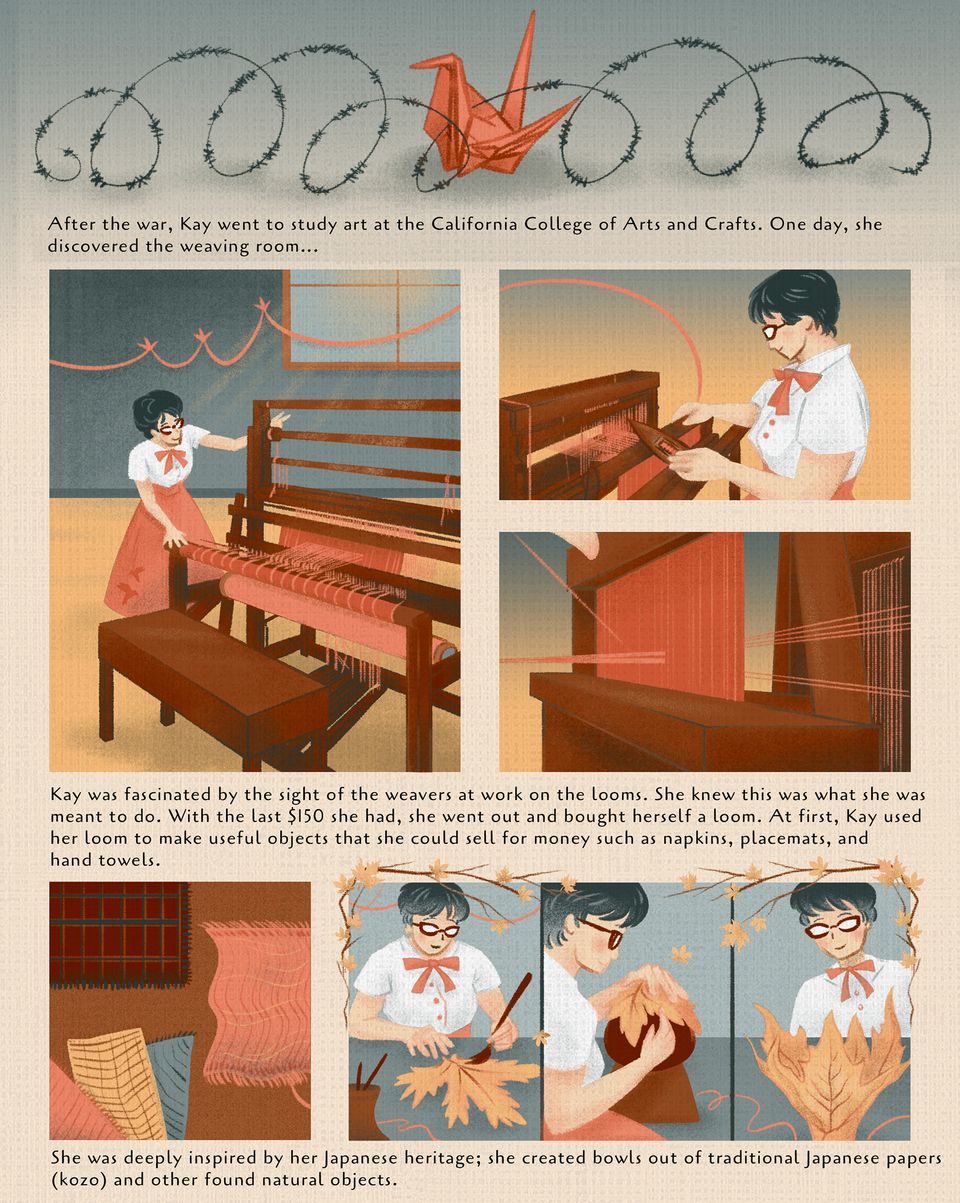
Panel one: coil of curly barbed wire stretches across the width of the page. In the middle is an orange origami paper crane. Text reads, “After the war, Kay went to study art at the California College of Arts and Crafts. One day, she discovered the weaving room...” Panel two: A young woman, Kay, is in a classroom, standing in front of a large floor loom. She has short black hair and is wearing the same clothes as in page 1 white button-down shirt with cap sleeves, an orange necktie, and a full orange skirt with origami cranes on it. She is examining the loom from the side and a bench is in front of the machine. The fabric on the loom is of the same orange and red shades of her skirt. Behind her is a large window with four panes. Above her is an orange thread. Panel three: Kay is sitting at the loom, using a weaving shuttle wound with thread in her left hand and guiding the thread in her right hand. She has a slight smile on her face, and a look of calm concentration. Panel four: A close-up of the loom with vertical threads of orange materials looped on the machine and horizontal thread of orange material woven through the loom. An orange thread loops through each of these panels, connecting them. Text reads, “Kay was fascinated by the sight of the weavers at work on the looms. She knew this was what she was meant to do. With the last $150 she had, she went out and bought herself a loom. At first, Kay used her loom to make useful objects that she could sell for money, such as napkins, placemats, and hand towels.” Panel five: Kay’s handiwork is laid out on a table. Three towels: one is red with yellow and green stripes, another is yellow with brown stripes, and another is blue with dark blue stripes. One woven creation is light pink and unfinished. A thread from this towel stretches into the next panel A border of flowering yellow branches at the top right and left corners stretches cross the top of next three panels. Panel six: Kay is wearing the same white button down and orange tie at her neck. She is sitting at a table painting a yellow leaf with a paintbrush in her left hand. A brown pot full of brushes in in front of her, and a red thread curves across the table. Panel seven: Kay is folding and layering leaves around a brown mold. The same orange thread peeks out from behind the mold and continues to the next panel. Panel eight: Kay is looking at the final product of a yellow leaf pot. The orange thread circles around the pot. Text reads, “She was deeply inspired by her Japanese heritage; she created bowls out of traditional Japanese paper kozo and other found natural objects.”
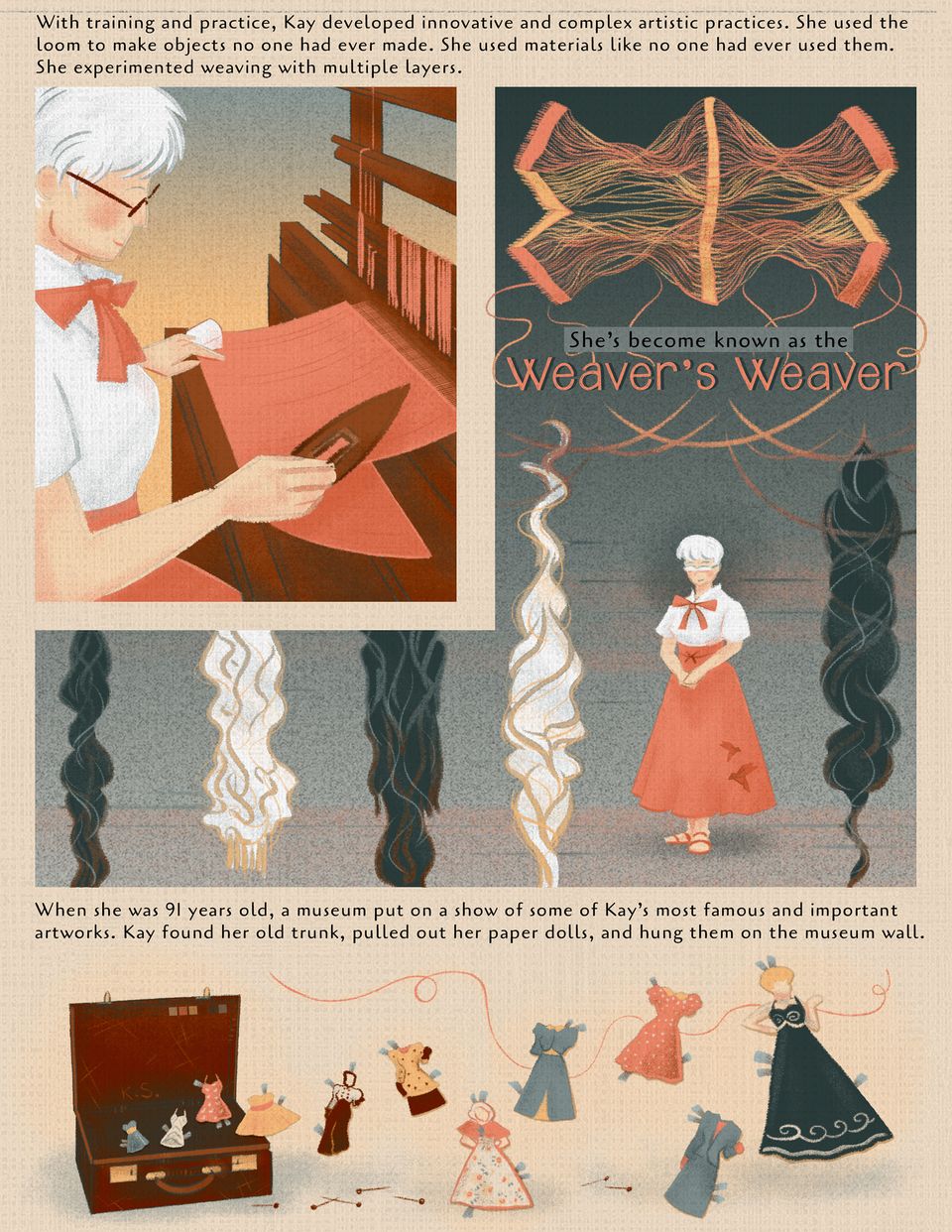
Text reads, “With training and practice, Kay developed innovative and complex artistic practices. She used the loom to make objects no one had ever made. She used materials like no one had ever used them. She experimented weaving with multiple layers.” Panel one: Kay is now an old woman. She has white hair and is wearing the same white button-down, short sleeved shirt and orange necktie, and full skirt from her younger days. She is sitting at the loom. She has a wooden weaving shuttle in her right hand and a white protective cover on her left hand. Panel two: Kay is standing amongst her tall black and white woven sculptures that look like whisps of clouds. Above her head are the same woven items in red and orange with long running threads linked together as on the cover page. Text reads, “She’s become known as the Weaver’s Weaver.” This panel wraps around panel one in the shape of a backwards “L.” Text reads, "When she was 91 years old, a museum put on a show of some of Kay’s most famous and important artworks. Kay found her old trunk, pulled out her paper dolls, and hung them on the museum wall.” Panel three: A brown suitcase with gold buckles lies open. Paper doll outfits are inside the case and float up into the air. There are eleven outfits in all, with tabs at the shoulders, hems, and hips: one blue and one white dress in the suitcase, then a red and white polka dot dress and yellow dress seemingly climb out of the case. In order, there is a white and red dress, a yellow and red polka dotted dress, a pink and white floral dress, a blue and yellow dress, a pink and white polka dotted dress, a blue dress, and a green and white dress, all strung together by an orange thread. Pins are scattered below the dresses.
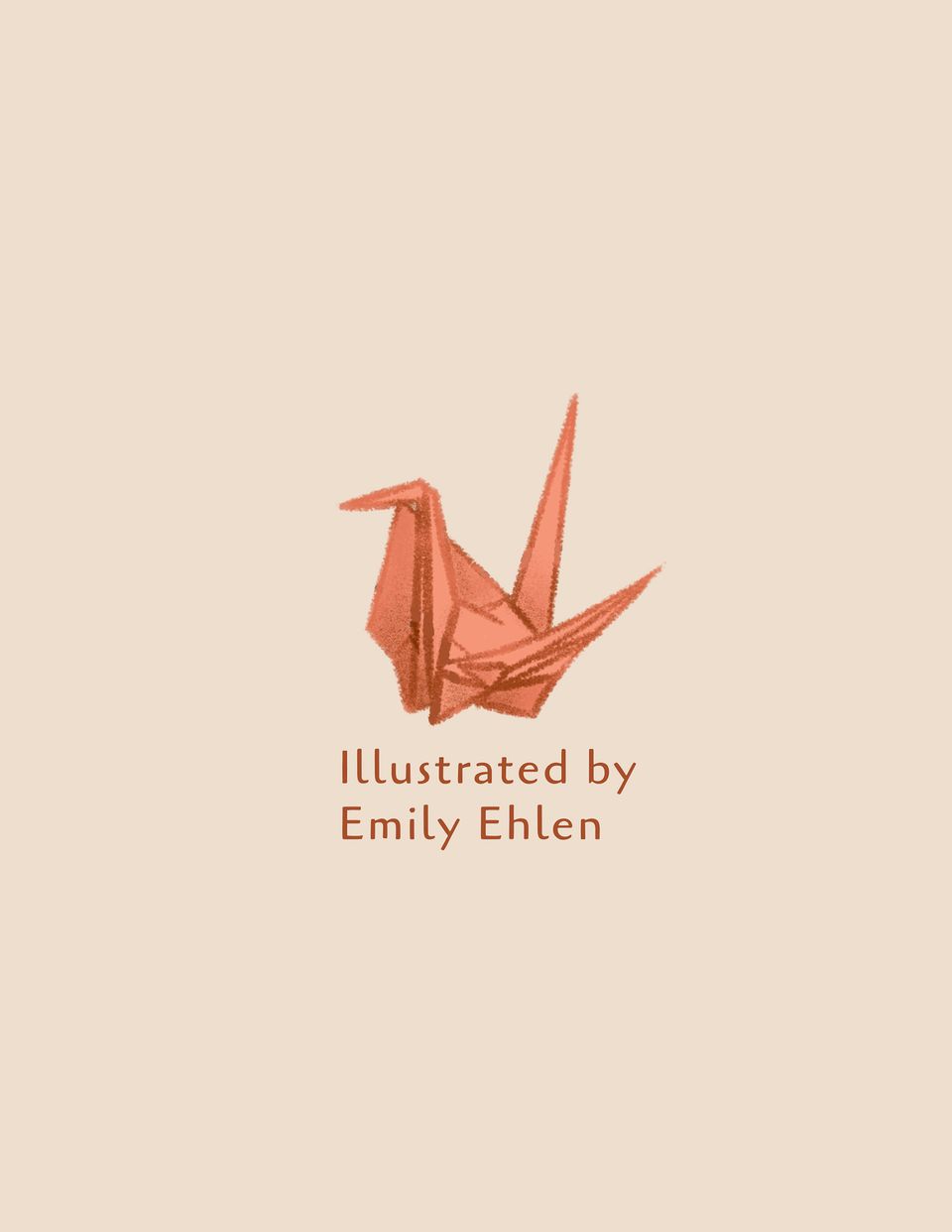
A single orange paper origami crane is in the middle of the page. Text reads “Illustrated by Emily Ehlen.”














